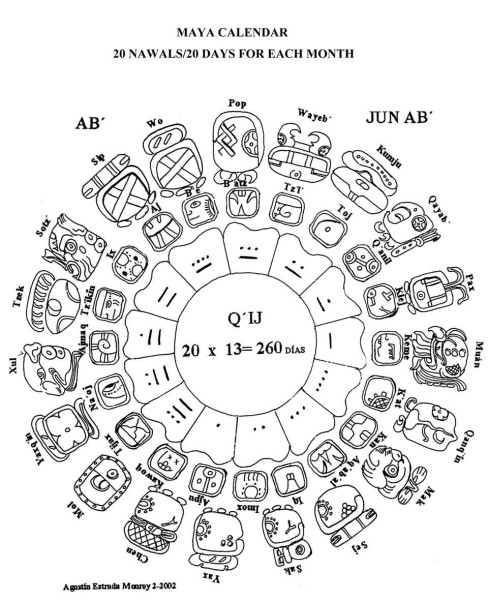More about the new cycle of the Maya calendar
We perpetuated the end-of-the-world notion in the bibliographies of the papers (and others in books) that were written in the late 1970s. The end of the world could happen in 2000, in the Maya world of 2102 and don’t forget Armageddon. In the late ‘70s, that was somewhat exciting.
Meanwhile, the Mayas kept their 5,000+-year-old Cosmovision, which includes the calendar, much to themselves. Keeping it away from the Spanish since 1524 had worked in Guatemala. With no religious freedom in Spain or England in the 16th century, the Spanish required that everyone attend the Catholic Church. While Mayas were exempt from the Inquisition, the language, cultural and geographical barriers kept them isolated much from the Spanish descendants and “ladinos” (Spanish culture Guatemalan) over the centuries. We knew little of the Maya ceremonies and had not even heard of a Maya calendar.
As we approached the “end of the world” on Dec. 21st, 2012, many of us began to inquire more. Indeed, the Mayas considered the date of the beginning of the new Maya cycle in the calendar as a re-birth of their civilization. Their calendar began in August 3114, B.C. and remains in use today. With a 20-count “month,” there are 20 nahuales (or protectors). Times that by 13 cycles, you get 260 days for the sacred calendar (which is also the duration of pregnancy). Two circles work together so the agricultural calendar is 365 days (20 x 18 days + 5 days for feasting). There are many cycles, including a 52-year cycle and many more. Professor Stuart indicates that the Maya calculations go into octillion years (yes, that is a lot of zeros). On Dec. 21st, 2012 we are coming up to the 13 Baktún, which marks a BIG new cycle (much like a millennium x 5+).
It is fun to find out one’s nahual. With 20 protectors, these include: aq’ab’al (bat), imox (crocodile), k’at (spider), iq’ (hummingbird), kej (deer), kan (snake), q’anil (rabbit), kame (owl), b’atz’ (monkey), toj (shark), aj (armadillo), tz’i’ (coyote), tz’ikin (eagle, quetzal), i’x (jaguar), ajmaq (bee, buzzard), e (wild cat), kawoq (turtle), no’j (woodpecker), ajpu (conch shell) and tijax (fish). All nahuals have positive and negative aspects (but what you do with those is up to you).
How will the Maya celebrate? With Maya ceremonies and giving thanks. I am sure a few petitions for a better future will be in order.
